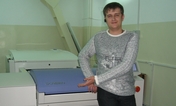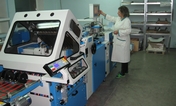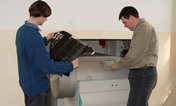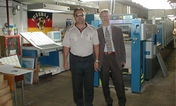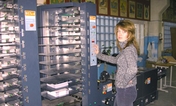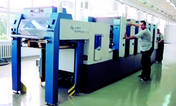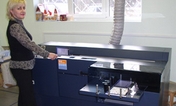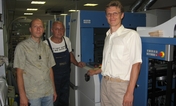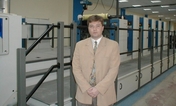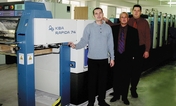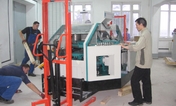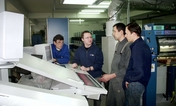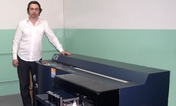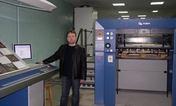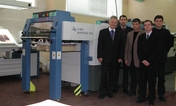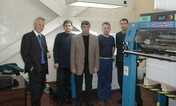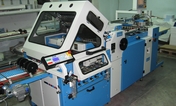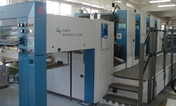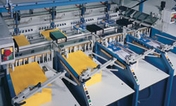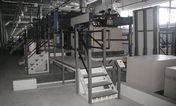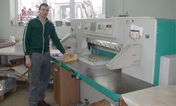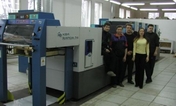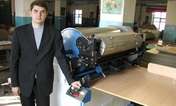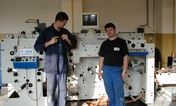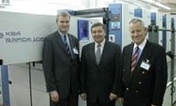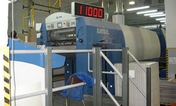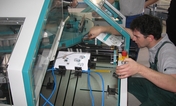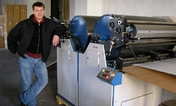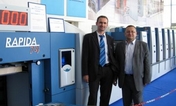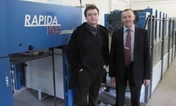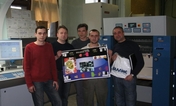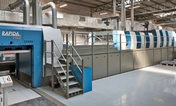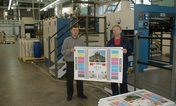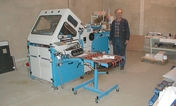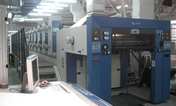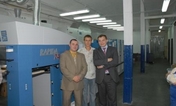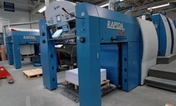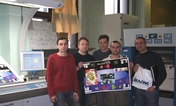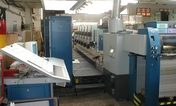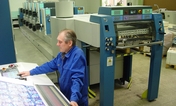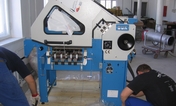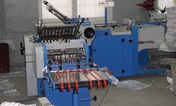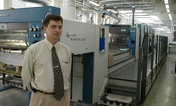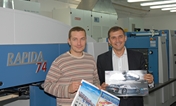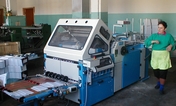
The city of Opava in central Silesia, with a population of almost 60,000, is one of the major Czech industrial centres. The printing houses which are based there are associated with prominent European graphic enterprises.
Model Obaly is owned by the Model group of Switzerland, and the plant in Opava is the biggest manufacturer of packaging in the Czech Republic. KBA technology dominates the company’s sheetfed capacity.
The installation of a Rapida 106 with eight printing units, a coater, two dryers and a further printing unit recently expanded both the company’s production capacity and its ability to offer packaging with finishing to the highest quality standards for the domestic and European market. The Rapida 106’s configuration and features are unique in the Czech Republic. One of its more unusual features is a Vinfoil Infigo cold-foil stamping device.
Luxury packaging made of board and foil
Model Obaly has established a reputation for producing premium-quality packaging. The new medium-format press will mainly be used for out-of-the-ordinary luxury cartonboard packaging, because standard press configuration are unable to handle this. Model Obaly also does foil printing, which is why the Rapida 106 is engineered to print flexible packaging.
“Management had been contemplating installing a B1 press with this unusual configuration for quite some time”, explains Jiri Matysek, technical manager for folding carton production. The contract with KBA was signed in summer 2011 and the Rapida 106 was installed at the end of the year. The capabilities of the press configuration are evident from the internal designation, which is KBA Rapida 106 SIS SPC-8+C+D+D+1 CX FO FAPC DE2 675. The composition of the individual modules indicates the high degree of flexibility with which KBA is capable of providing the technology to accommodate out-of-the-box user specifications.
Configured for maximum flexibility
The press operates with a DriveTronic SIS (Sensoric Infeed System) sidelay-free infeed. If necessary the plates can be changed simultaneously in all nine printing units via DriveTronic SPC. DriveTronic Plate Ident checks that the plates are allocated to the specified inking units for the job concerned, and automatically ensures correct preregistration with the aid of register marks on the plates. The CX board-handling capability enables the Rapida to handle sheets up to 1.2mm (48pt) thick at high speeds. The 2.4m (7ft 1in) delivery extension guarantees that the freshly printed sheets are dried right through. And to accommodate the thicker substrates – and thus higher piles – used in packaging production the press is mounted on a 675mm (26.57in) plinth.
Dramatic reduction in foil consumption with MFU
The Rapida 106 at Model Obaly was one of the first presses in the Czech Republic to incorporate a module for inline cold-foil stamping. It is positioned above the second printing unit and differs substantially both in design and function from other known systems. Vinfoil’s Infigo SF 110GF (Gloss Foil) system with MFU (Multiple Foil Use) features automatic foil change, two turner bars for separating the foil and, with the MFU capability, a device for feeding the foil in as a double loop, reducing foil consumption by as much as 88 per cent. Optimising foil consumption for every job was one of the company’s key specifications when searching for a vendor. The cost efficiency of the system installed by KBA has been well proven in practice. With MFU the foil does not need to be unwound across its full width nor around its full circumference. Depending on the image it can be used several times over.
The press run is monitored by a camera-based QualiTronic Professional inline sheet-inspection system which compares the scanned image with the original and in the event of deviations in colour automatically adjusts the ink application. The investment package also includes an automated logistics system for substrate transport at the feeder and the delivery. The feeder and delivery both have automated nonstop facilities for pile change. Despite the Rapida’s length and complex configuration its maximum production speed is 15,000 sheets per hour, with and without cold-foil stamping.
Image-specific drying guaranteed
The foil adhesive is applied in the first printing unit, the foil itself is applied in the second unit and the image printed in the subsequent six units. In the coater the sheets can be finished with either an aqueous or a UV coating. Once the sheets have been dried or cured in the two dryers they can have an overprint varnish added. End-of-press drying follows in the delivery extension where there are hot-air, IR and UV drying units. This hybrid configuration enables the press to handle both conventional and UV inks. An interdeck UV radiation unit can be inserted after every printing unit. The drying/curing system is thus exceptionally versatile. Depending on the job in hand, the UV lamps can be inserted at different positions for intermediate curing.
Five litho presses from KBA
Model Obaly has worked with KBA sheetfed offset presses for a long time. At present the company has five presses for B0 (56in), B1 (41in) and B2 (29in) formats. The large-format models comprise two six-colour Rapida 142s with coaters. The most recent Rapida 142 is configured for hybrid production processing both UV and conventional inks. The B1 presses are an older five-colour Rapida 104 with coater and the new long Rapida. To handle short runs of packaging there is a Rapida 74G with five printing units and two coaters. This press, which is waterless, was the first of its kind in the Czech Republic and is a further example of the company’s ongoing policy of installing cutting-edge technology. Alongside offset Model Obaly also operates flexo and digital presses.
“The focus of production with our new Rapida 106 is on coated and finished packaging with a correspondingly high value added. Thanks to its new technology we can offer our customers premium-grade products, which is a major advantage in such a competitive market. In addition to investing in new presses we also enhance our service portfolio on a permanent basis. For example, at present we are in the process of building a new innovation centre for packaging design. Once it is up and running it will collaborate closely with universities and top designers”, says a delighted Jiri Matysek.

